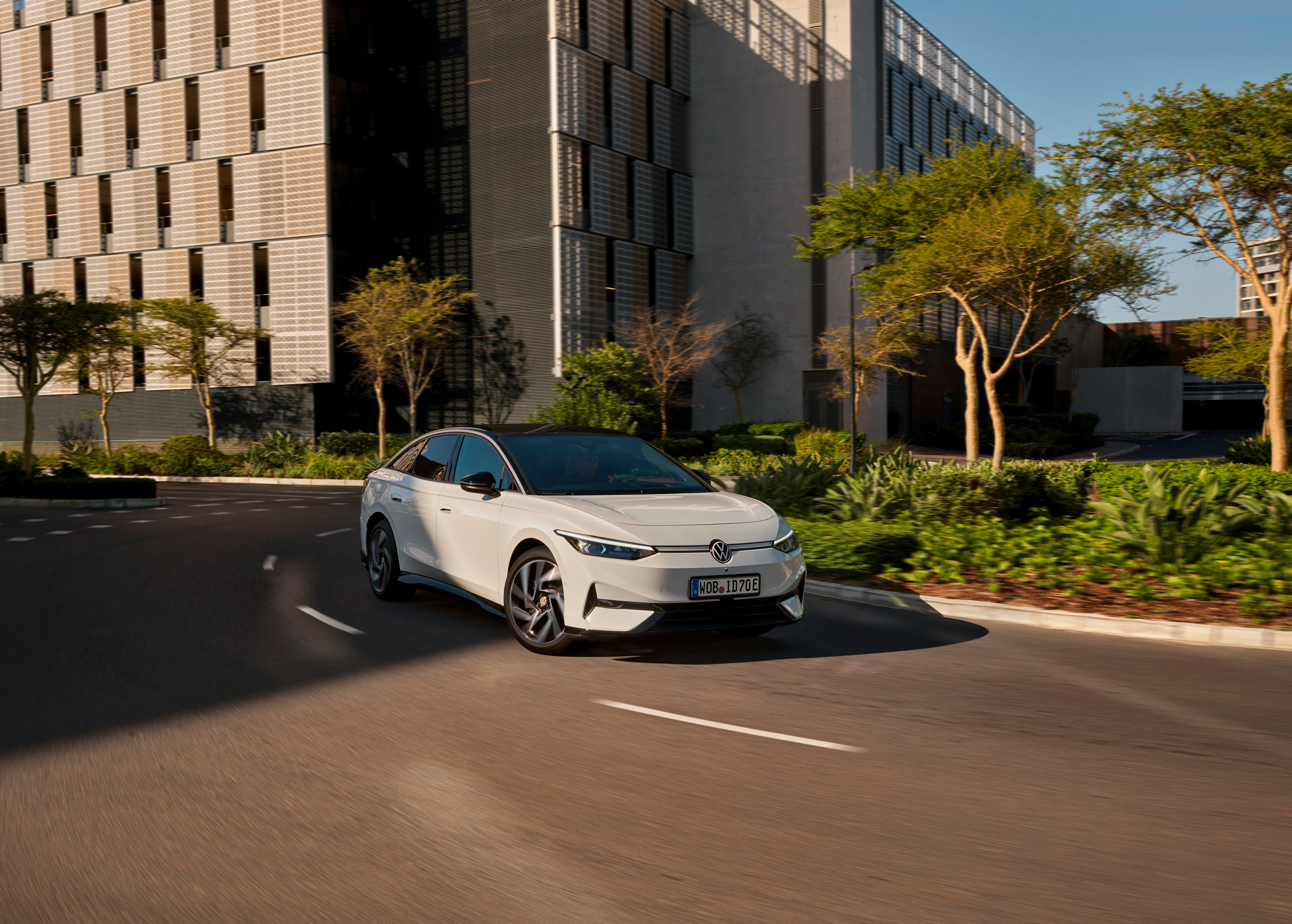
We have some good news and some bad news. The good news is that Volkswagen has finally confirmed all the details of its long-awaited ID.7 sedan, which we got a first sneak peek at this year's CES in Las Vegas. The expected particulars, like massive range and next-gen EV luxury, are all there.
The bad news? We won't see it in the U.S. until sometime in 2024. Oh, and it's going to be built in Germany, so it probably won't qualify for our new and convoluted tax incentives. More on that in a moment.
What is the ID.7? It's a long, luxurious sedan from Volkswagen. 195.3 inches long to be exact. That's almost four inches longer than Volkswagen's current luxury sedan, the Arteon, and about two inches longer than the Passat. It's a big 'un, and thanks to VW's MEB architecture, the company's all-electric platform that also sits beneath the ID.4, that should make for a particularly roomy space.
That's because the batteries sit down in the floor, the single electric motor tucked between the rear wheels. That creates a big, flat space upon which Volkswagen has built what should be its most luxurious sedan since the Phaeton, a car we haven't seen in North America since 2006. The ID.7 will feature some impressive tech and comfort features standard, like an electro-chromic glass roof. This means it'll automatically and digitally go from transparent to tinted at the touch of a button — or, if you really want to impress your passengers, at the utterance of a voice command.
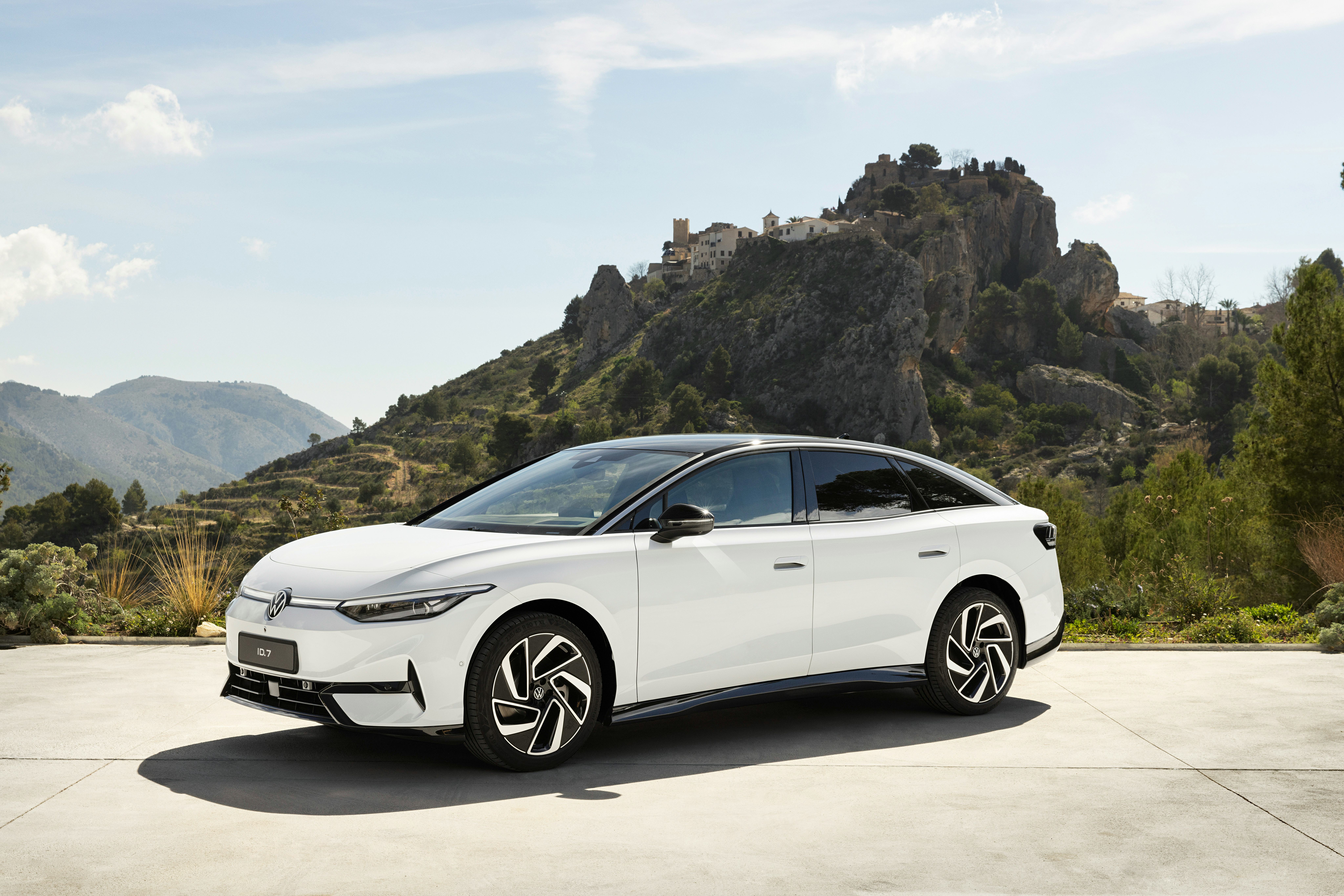
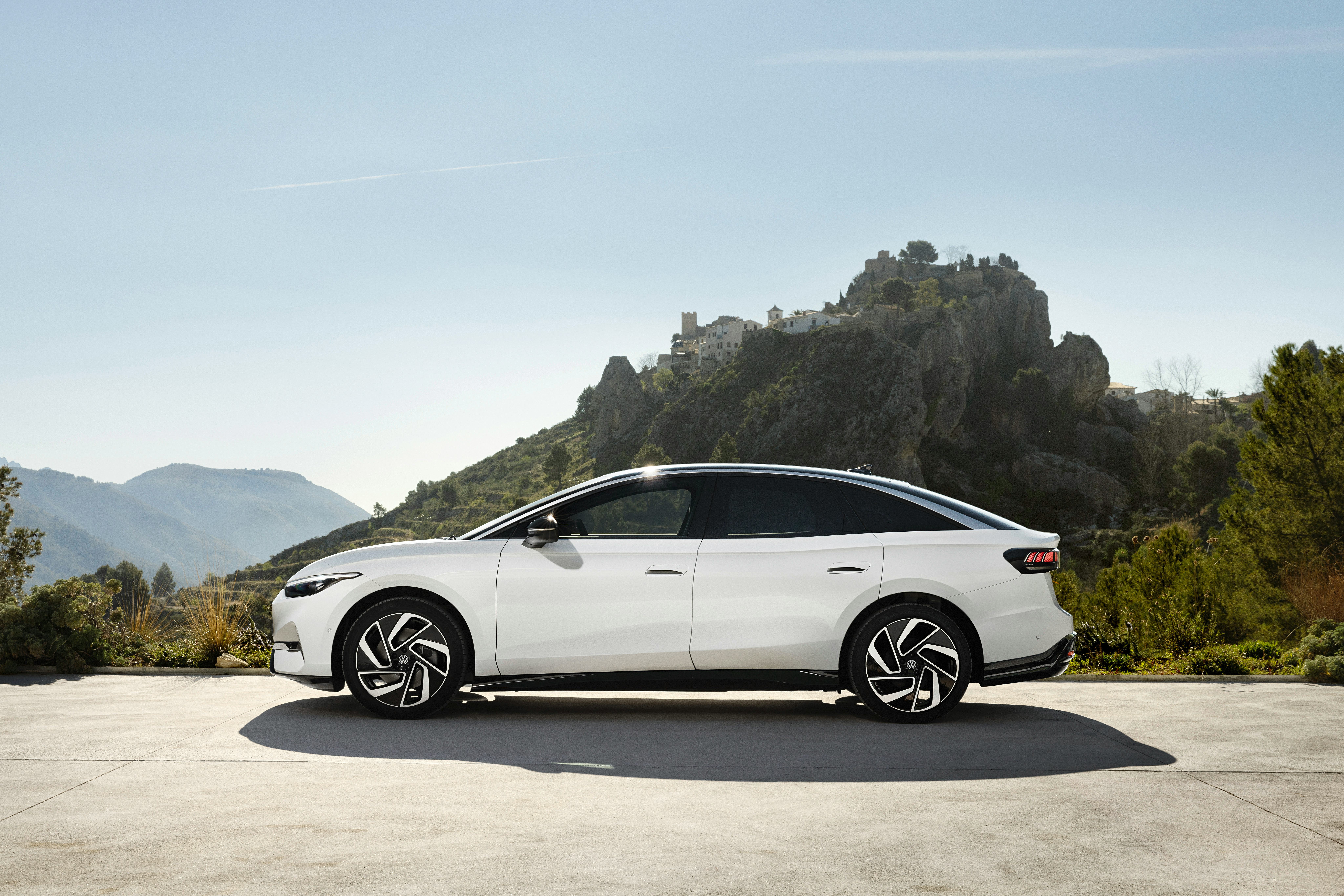
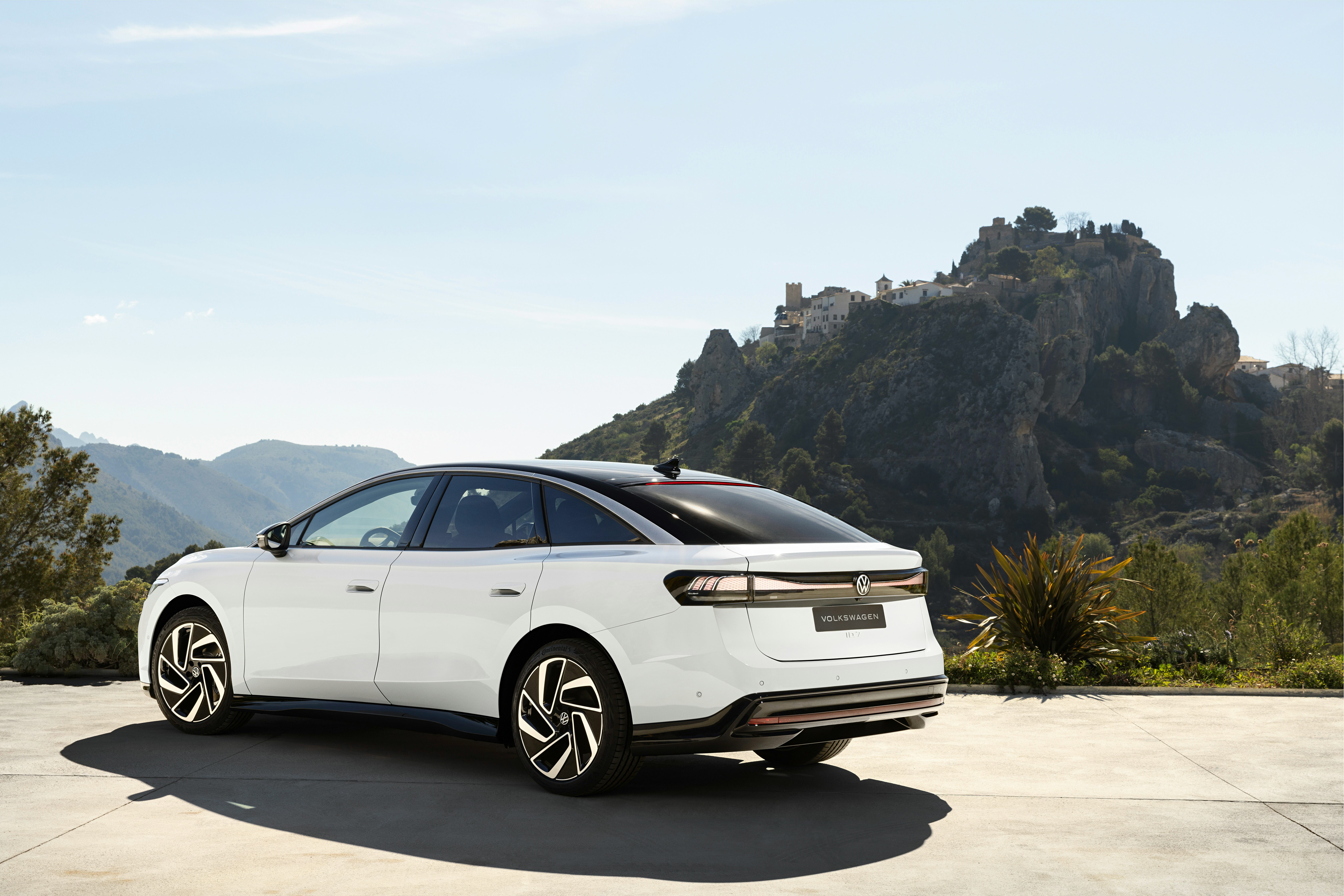
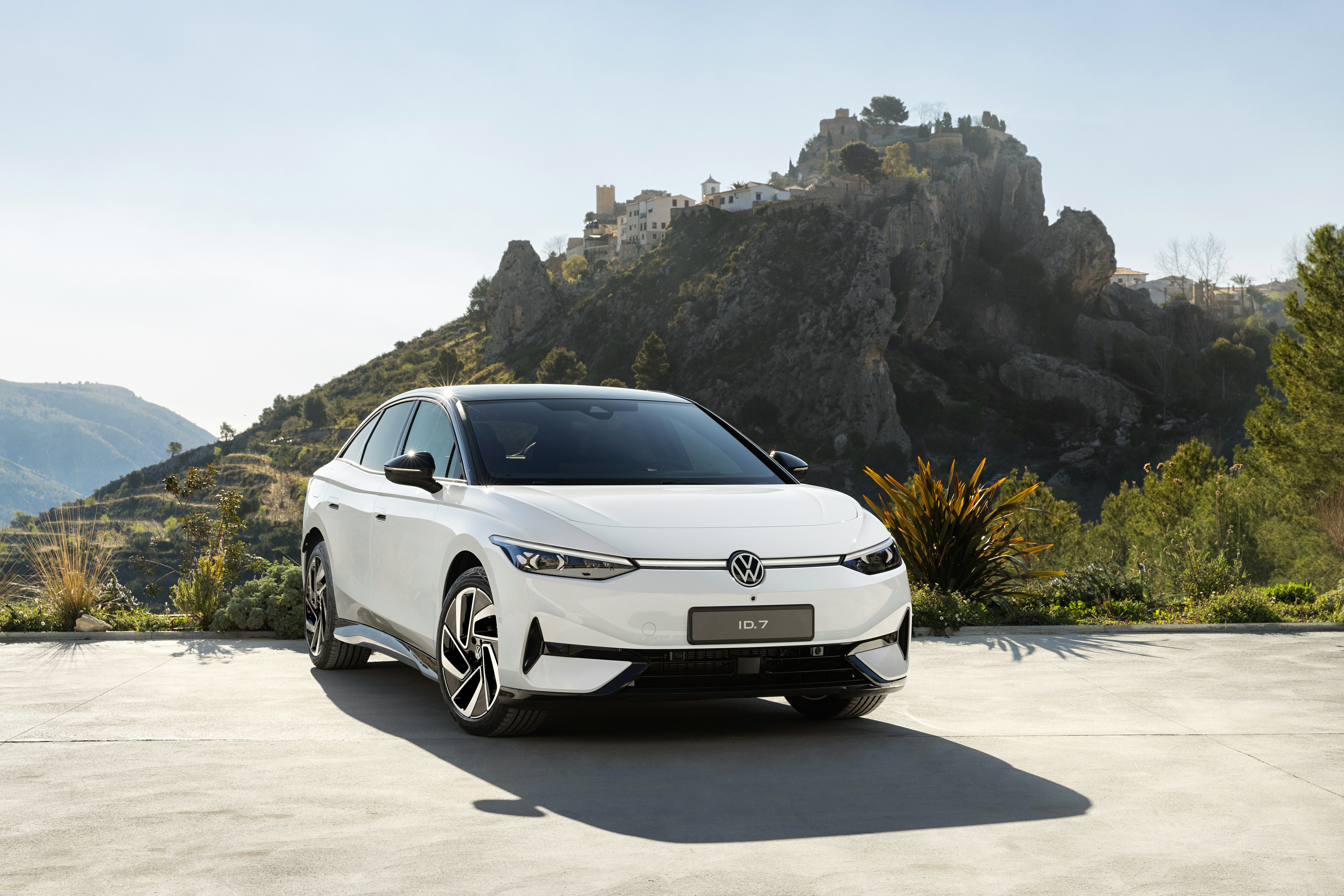
HEADS-UP
Every ID.7 will also have an augmented-reality heads-up display. This fancy HUD will project information about navigation or hazards directly into your field of view, aligning it with your eyes so that it'll appear to float in space directly over whatever is being designated. This kind of tech isn't novel, you can also find it in the Mercedes-Benz EQS and elsewhere, but VW plans to leverage it here more strongly than we've seen in other cars. VW says the HUD will be the main source of information, so much so that the ID.7's gauge cluster behind the steering wheel will contain only the bare minimum, things like speed and federally mandated warning lights. All the other data points will seem to float in space, meaning you the driver can keep your eyes on the road.
A new infotainment system running on a 15-inch screen, hopefully one with snappier performance than what we've seen on the ID.4. Along the top, a quick-access section will include a customizable list of your most frequently used apps. On the bottom, heating and seat controls will always be available regardless of what's going on on the rest of the screen.
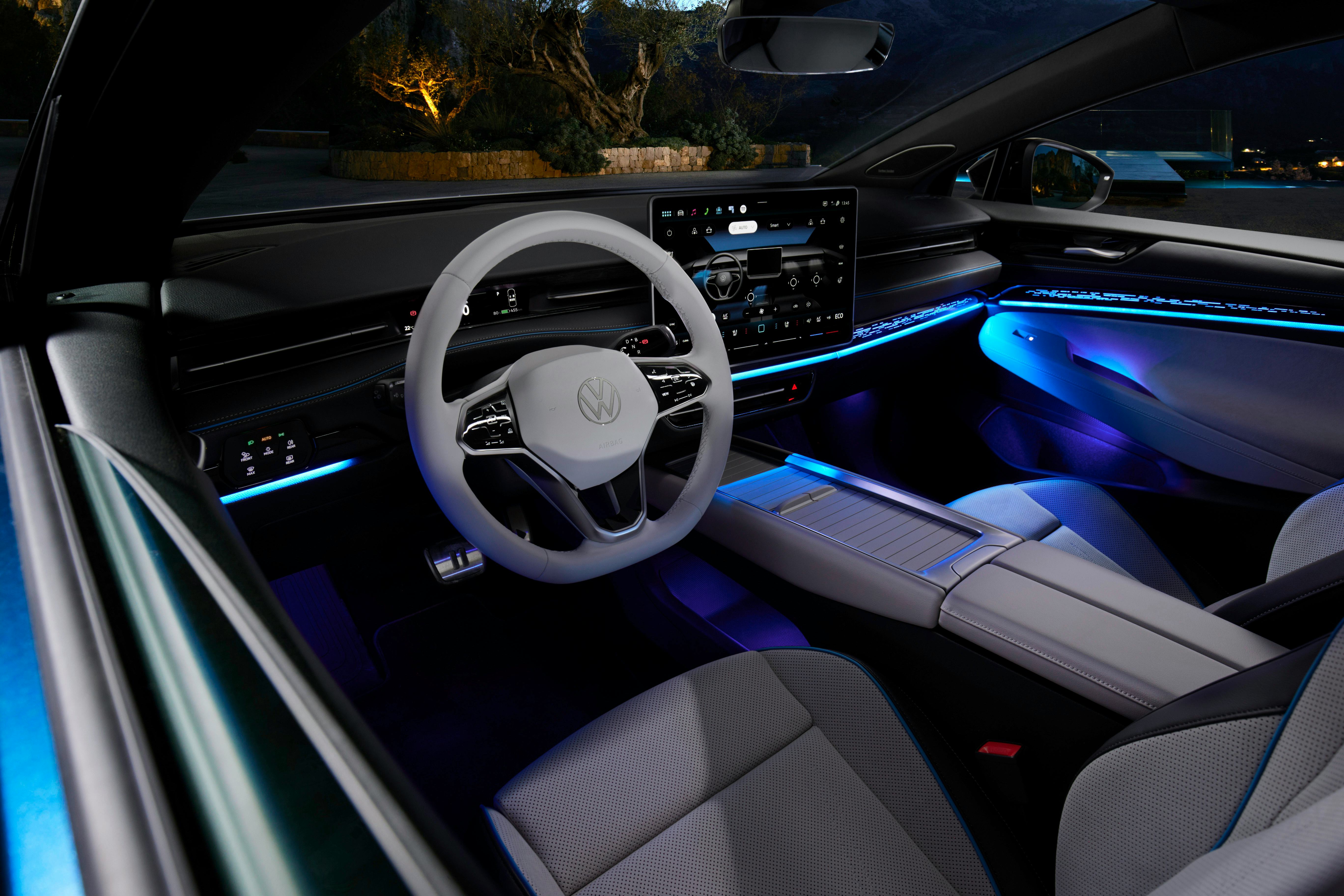
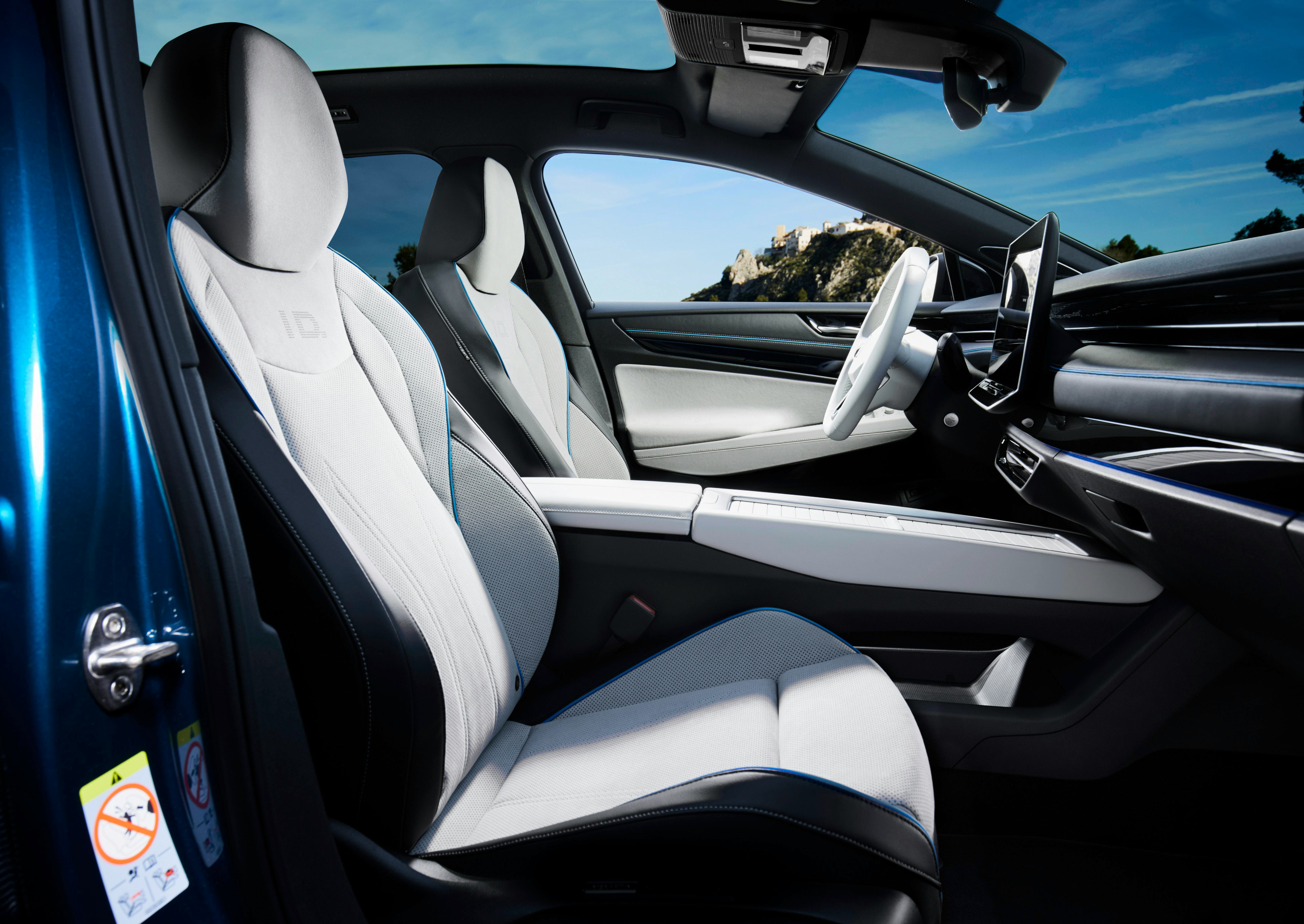
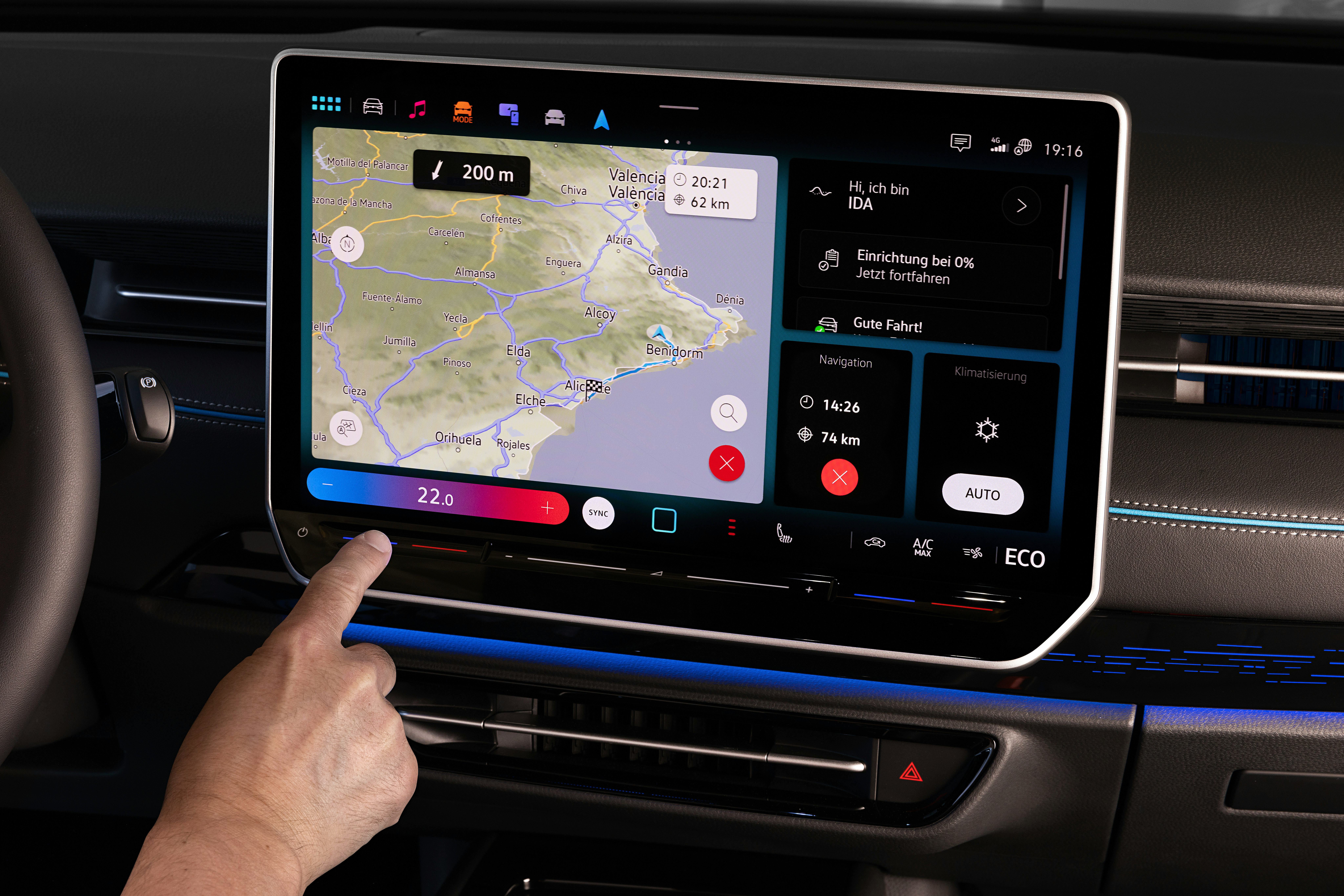

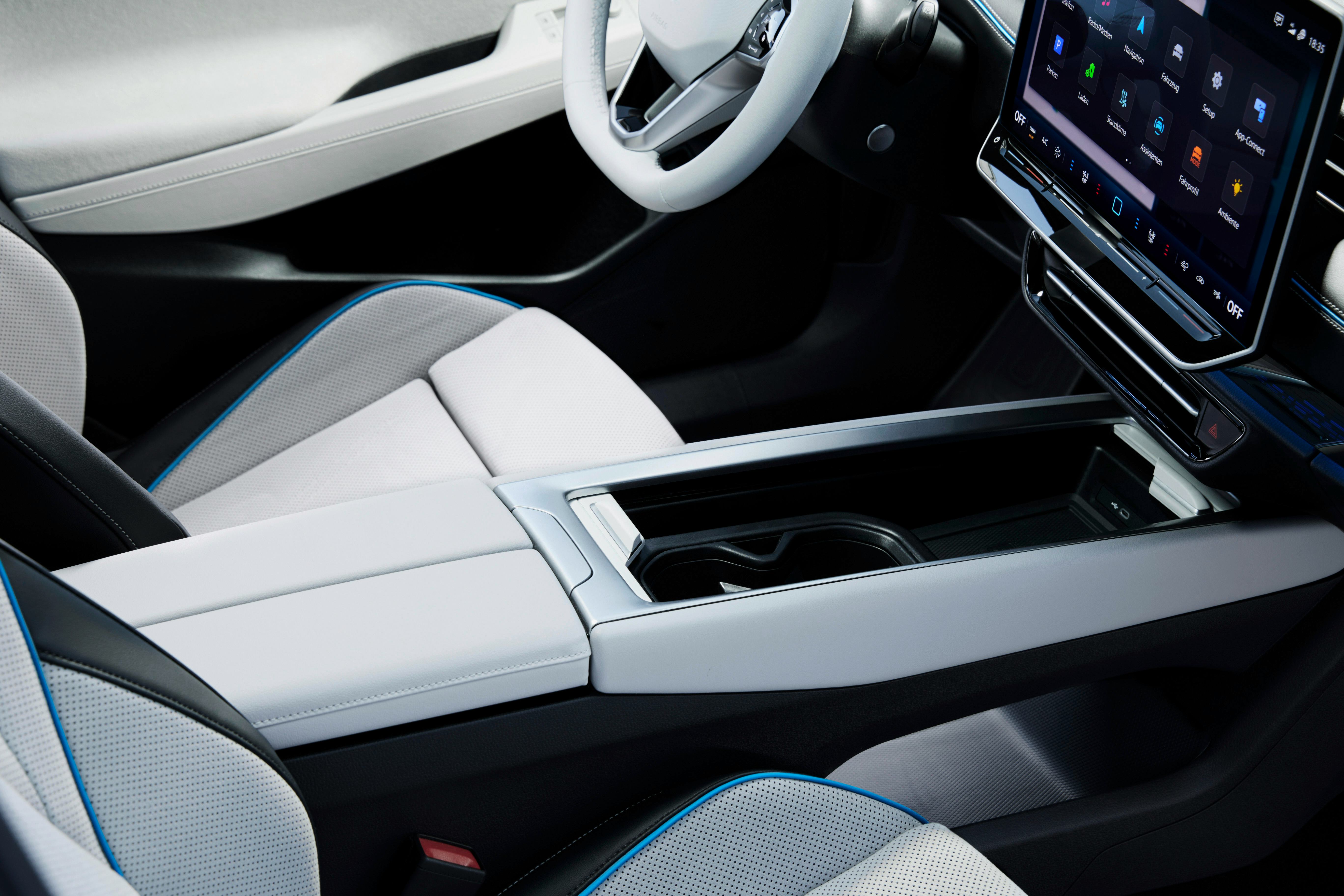
Those seat controls will be a little more involved than before because the ID.7 includes seats that are radically more advanced than your average bucket. Sure, they're power-adjustable and heated and cooled as you'd expect, but the ID.7 takes that a step further with integrated moisture and temperature sensors. Yes, your car will be able to automatically detect when things start to get a little swampy down there and can compensate automatically with additional venting.
If that weren't enough, 10 air bladders will compress and knead your back to make those long drives a little more tolerable, while another two bladders built into the bottom will keep the circulation going in your posterior.
REAL RANGE
That may sound like overkill, but since Volkswagen is promising up to 435 miles of range in this thing, you could foreseeably go for a very, very long time without the car needing a pit stop. Mind you, that's the company's estimate on the European WLTP cycle. The American EPA cycle is notoriously more demanding, but even here we should see the ID.7 posting upwards of 350 miles of estimated longevity on the window sticker. That's right up there with the Hyundai Ioniq 6 when it comes to epic endurance.
Like the Ioniq 6, the ID.7 delivers that range thanks largely to its aerodynamic tweaks, with an official 0.23 coefficient of drag. However, VW is also talking up a new motor design with permanent magnets, a more expensive configuration but one that yields greater power density and efficiency. That, combined with a new cooling setup for both the motor and the battery pack, help to drive that ridiculous rating.
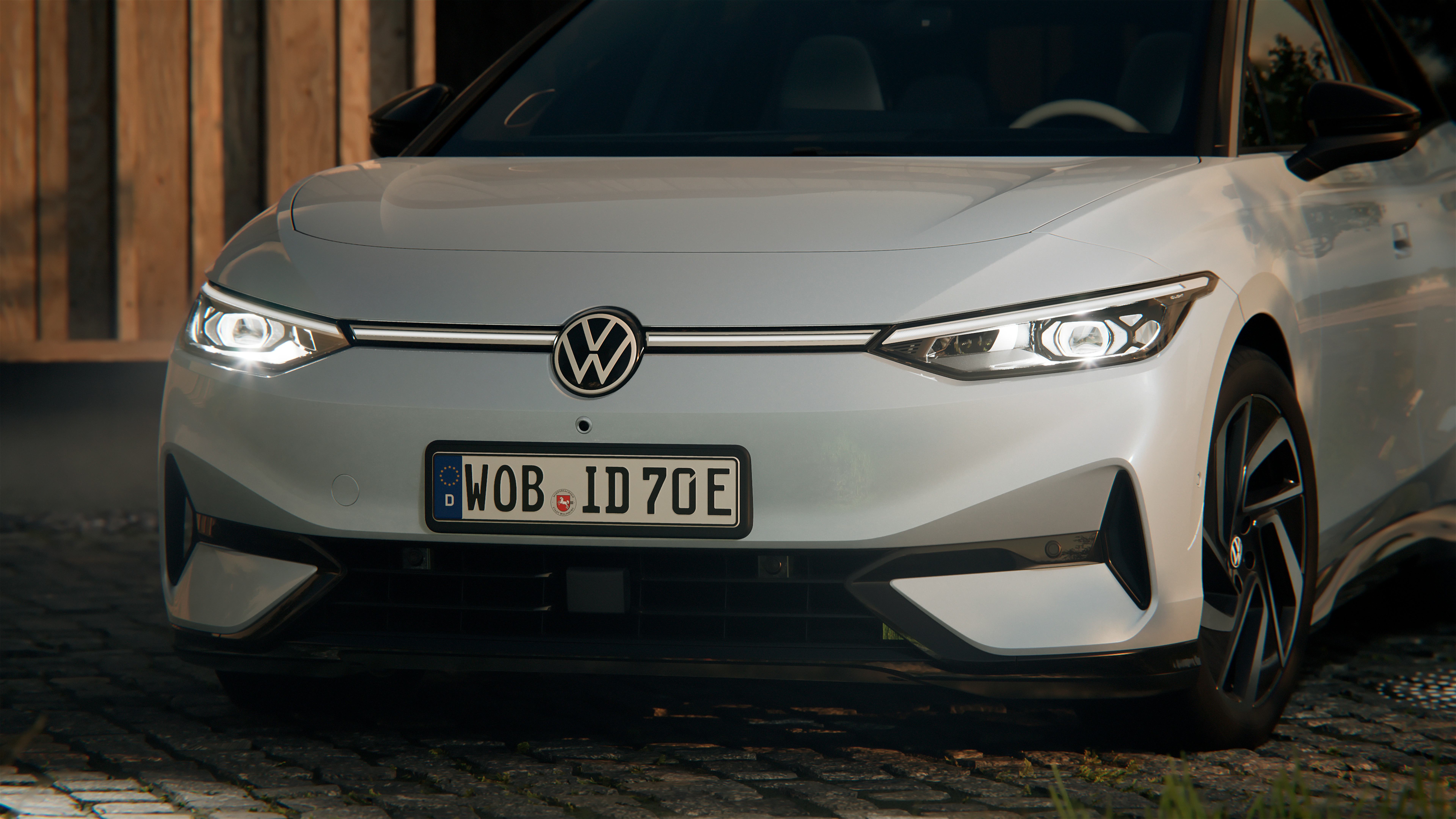
Speaking of batteries, the ID. Pro S will have an 86 kWh pack. Volkswagen will also offer a presumably less-expensive ID.7 Pro model with a smaller, 77 kWh battery. That one's estimated range is 382 miles on WLTP, or probably right around 300 on the EPA cycle.
All that sounds amazing, but there are a few yucks in this bundle of yum, the first being pricing. Volkswagen hasn't given any indication of price for either of the ID.7 models, so we don't have much to go on, but with that level of standard equipment expect it to come in north of the ID.4 SUV, which starts at just under $39,000. Crucially, that SUV is assembled at VW's Chattanooga, TN plant, which makes it eligible for the current $7,500 tax incentive.
For now at least the ID.7 will be built in Germany, which likely means no incentive. Another problem? While Europe and China will see the ID.7 this year, the U.S. won't see it until sometime in 2024.
That's a long time to make typically impatient American consumers wait, but based on all the details it sounds like VW's sedan might just be worth it. The proof, of course, will be in how it drives, and we'll report back on that as soon as we have a chance to get behind the wheel.







